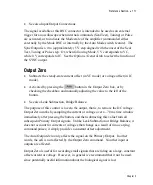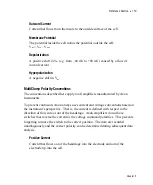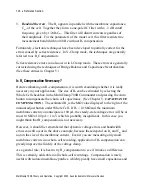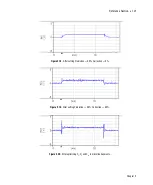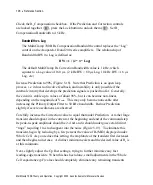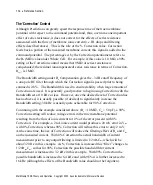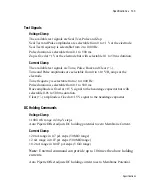
Reference Section
•
129
(Figure 5.20). If this is not possible in the real experiment, iterative fine
adjustments of Cp Fast and Whole Cell R
s
may achieve the desired cancellation. If
all of this fails and the oscillations are too severe, you may need to go back to the
beginning and set the Prediction and Correction controls to lower values.
By reducing the Bandwidth control under R
s
Compensation you can usually
increase the percent compensation without instability. However, this is likely to be
a false improvement if it is pushed too far. Reducing the Bandwidth slows down
the feedback circuit used in R
s
compensation, reducing its dynamic response. For
example, if you limit the Bandwidth to 1 kHz, the Rs Compensation will be reduced
substantially for conductance changes faster than 160 us. Bottom line: if you
increase the Bandwidth value, you can measure faster conductance changes, but
you sacrifice Rs compensation stability. One tremendous advantage of the
MultiClamp 700B is that you can choose to automatically disable or reduce Rs
Compensation if oscillations should occur due to changes in membrane or pipette
properties during an experiment (see
Tutorial 5
in Chapter 2).
In order to see the improvement brought about by R
s
compensation, check and
uncheck the R
s
Compensation checkbox. A dramatic speeding-up of the Membrane
Current should be apparent with the compensation correctly adjusted.
Theory of R
s
Compensation
The MultiClamp 700B uses a dual approach for R
s
compensation, like the Axopatch
200 series of amplifiers. This provides superior correction and stability.
Chapter 5



